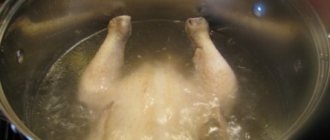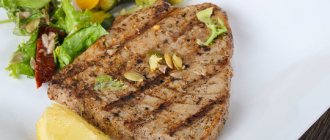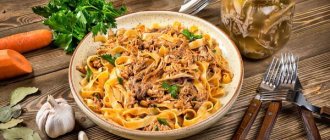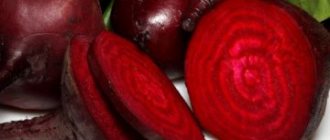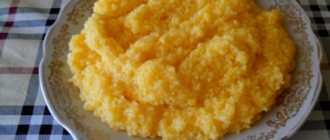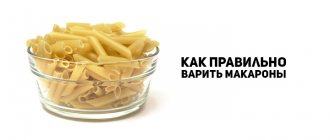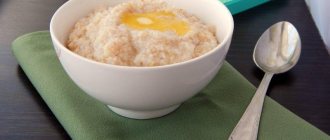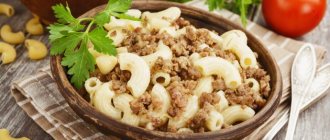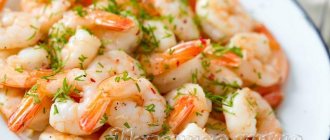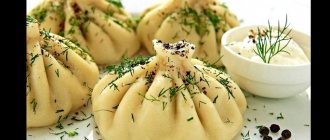Pasta is a staple food for many. The Italians are considered the creators of this product, but the national cuisines of other nations can also boast of their presence. In Russia – thinly sliced noodles. Housewives secretly competed among themselves: who would roll out the dough thinner or cut the noodles thinner. In Azerbaijan and Turkey, such products are khinkali (not to be confused with Georgian ones). This is thinly rolled out dough, cut into squares. And if you squeeze them in the middle, you get a bow. The advantage of this product is that when dried they can be stored until the next harvest. The main thing is that it is dry. The Italians managed to become famous for their pasta, so Italian names penetrated into Russian and other languages. Pasta, like macaroni, is another generalized name for this flour product.
The Barilla family enterprise, founded in 1877, is considered the leader in the production of Italian pasta. This oldest company sells its products to various countries of the European continent, including Russia. The company produces long pasta - spaghetti, thin pasta, nests. Short pasta includes: spirals, snails (shells), feathers, small and thin vermicelli - gossamer. Barilla produces pasta made from whole grain wheat, and the products from this manufacturer are best suited for preparing al dente.
For an experienced housewife, the question of how long to cook pasta is not worth it, but young ones sometimes get lost. There are many different types of pasta, and you want to cook them correctly so that they are delicious, so that you can surprise your loved ones and guests. They don’t know how to do it correctly.
How to cook pasta - general cooking principles
There is simply no ideal recipe and exact time for how long to cook pasta. It all depends on the type of wheat used, the size of the products and the chosen cooking method.
But there are general principles that will help you prepare the perfect dish.
Five secrets of perfect pasta:
- Before cooking, it is advisable to study the information on the packaging. Usually the cooking time is indicated there. But it is also approximate.
- To prevent pasta from sticking, you can add a little oil to the water while cooking. And, of course, lubricate the finished products.
- Of course, you can fill a pack of products with a liter of water and cook. But it is believed that for ideal pasta you need at least a liter of liquid per 100 grams of dry product, regardless of its size and shape.
- Never skimp on pasta. If they are made from bad wheat, then it is more difficult to achieve a tasty and perfect dish. And, by the way, the cost of different types rarely makes a really big difference and hits the wallet hard.
- Immediately after adding the pasta to the water, you need to mix it well. Otherwise they will definitely stick together.
These simple tips will help you prepare a quality side dish or any other dish. But how and how long should you cook pasta so that it doesn’t stick together and turns out tasty and neat?
Types of pasta
Pasta is divided into groups and types. In Russia, it is customary to divide products into three groups (according to the type of flour that is included in the product).
- Group A: durum wheat flour of all varieties.
- Group B: soft wheat flour of the highest, first grade.
- Group B: baking flour of the highest and first grade.
The most common are products of the first group. Solid varieties are long-lasting carbohydrates that do not provoke sudden spikes in blood sugar, take longer to digest and do not turn into fat. They also contain less gluten - an ideal choice for allergy sufferers and those who are concerned about their health.
Pasta is divided not only into groups, but also into types according to shape and size.
- Long: bavetti, capellini, vermicelli, spaghetti, spaghettoni, spaghettini, bucatini, maccheroncini, fettuccine, tagliatelle, mafaldine, linguini. Subspecies differ in length and width. The longest are spaghetti, according to the standard their length is half a meter, but for convenience the length was reduced to 25 centimeters. The thinnest ones are capellini, translated as “hair”, diameter – 1.2 mm.
- Short: cellentani (spirals), fusilli (three twisted spirals), girandole (small fusilli), maccheroni (shell), penne (tubes with carved sides), pipe rigatti (snails).
- For baking: cannelloni (large tubes), lasagne (rectangular sheets).
- Soup: anelli (rings), stelline (stars), filini (noodles).
- Curly: different shapes from butterflies to letters.
Pasta may include spinach, tomatoes, eggs, and herbs.
How to cook pasta in a saucepan
The most common way to cook pasta is to cook it in a saucepan. This is how products are prepared for side dishes, casseroles and other needs. Many housewives use this method, but how to properly cook pasta on the stove?
Ingredients
- 300 grams of pasta;
- 3 liters of water;
- 2 tablespoons of salt;
- 40 grams of butter.
Preparation
- Pour water into the pan, put it on the stove and let it boil. Salt.
- Place the dry product in the water and immediately stir well, otherwise the product will stick to the walls of the dish and to the bottom.
- Now you need to cover the pan with a lid for a few seconds and turn the heat to maximum so that the products boil as quickly as possible.
- Immediately remove the lid, otherwise the dish will “run away” onto the stove.
- Turn the heat to moderate and cook until done.
- But how long should you cook pasta? If the time on the package is 10 minutes, then at 9 minutes you need to try.
- If the products are ready, then drain them into a colander. You can rinse with boiling water.
- Add oil, stir and you're done! You can use any oil. It is better to melt the butter so that it is more evenly distributed over the products.
Pasta for frying and baking
Various dishes are often prepared from boiled pasta, followed by frying or cooking in the oven, for example, for casseroles. But for them, the products need to be prepared a little differently; they cannot be overcooked.
Ingredients
- 300 grams of pasta;
- 3 liters of water;
- salt;
- oil.
Preparation
- Boil water with salt, pour in a couple of tablespoons of oil.
- Add the pasta, stir and bring to a boil over high heat.
- Reduce heat and cook, but not until fully cooked.
- As soon as the products increase in size, but are still a bit harsh, you need to try them.
- If the pasta doesn’t stick to your teeth and is easy to bite through, then you’re done! They will reach further when frying.
- If the products are sticky and difficult to get through, then we bring them to the state described above.
- If the pasta is soft and completely cooked, then when frying it will lose its shape. Therefore, the dish will have to be cooked with a small amount of sauces and at maximum temperature so as not to turn into pasta porridge.
How to cook pasta so it doesn't stick together
If you can’t cook pasta well and it constantly sticks together, you can resort to some tricks.
Ingredients
- pasta 300 g;
- 3-4 liters of water;
- 50 grams of butter;
- salt.
Preparation
- Take a large and wide pan. Tall dishes will not work. We need the heat to be distributed as evenly as possible.
- Add salt and immediately add oil. All 50 ml. It will envelop the products and reduce their adhesiveness.
- As soon as the water boils, add the pasta and quickly bring to a boil. You can cover the pan with a lid for a short time to speed up the process.
- After boiling, carefully stir the products to coat with oil again. We do this carefully, it is better to use a spatula. Stir every 2 minutes, that is, another 2-3 times.
- Place the finished products in a colander and immediately pour boiling water over them.
- Add oil, cover and shake the pan vigorously. That's all!
Every housewife needs to know the standard rules!
So, it is necessary to adhere to simple but precise cooking rules that have existed since ancient times, namely:
- In order for the pasta to cook well and not stick together, it must be cooked in a large saucepan, taking into account the fact that for every 100 g of product there should be 1 liter of water. Otherwise, they will not have enough space, they will become sticky and will take longer to cook;
- The pan for cooking should be taken high and, preferably, its walls should be thicker than a regular one;
- Boiled pasta should be stirred thoroughly; a wooden spoon is ideal for this;
- You need to salt the water after it boils until the moment when the vermicelli is lowered into it, with the calculation of 10 g of salt for each individual liter of water. It is highly not recommended to salt the water when pasta is already boiled in it;
- When choosing the size of the pan, you need to take into account the fact that during the cooking process the amount of food increases approximately 2 times;
- One of the main rules for successful cooking is that they need to be poured into the pan at the moment of reaching maximum boiling, and in its center, where it is strongest;
- Ready pasta should be soft. There should be no flour taste left on the teeth. But if you still have it, you need to turn off the heat and leave the dish to stand under the lid for about 3 minutes, after draining the water;
- Do not rinse pasta, especially with cool water. This procedure makes the amount of useful microelements much smaller;
- When the vermicelli is ready, you need to drain the water from it, place it in a colander and shake it several times. Then return it back to the pan, season with sauce, if you have one, or add 2-3 tablespoons of the broth in which it was cooked (it should be left before draining) to prevent drying out.
Pasta in milk
Milk soup or porridge is a wonderful dish not only for children. It is ideal for breakfast, easy and quick to prepare. You can take any product, from shells to horns and noodles.
Ingredients
- 1 liter of milk;
- 200 grams of pasta;
- 30 grams of butter;
- 2 spoons of sugar;
- salt.
Preparation
- Boil the milk.
- Salt, sugar and immediately add butter. For dairy dishes, it is better to use butter.
- Pour in the pasta, stir and let it boil.
- Reduce heat and cook until soft. Vermicelli is enough for 2-3 minutes. Horns and shells need to be boiled for 8-10 minutes.
How to cook pasta in a saucepan with other ingredients (in soup)
Cooking pasta in combination with vegetables and other ingredients is more difficult. It is necessary to correctly determine the time of laying the product.
Most often the soup is cooked with pasta. It’s easier to use web vermicelli for this. Just let the soup boil and you can immediately turn it off. But how and how much to cook other pasta?
Ingredients
- soup;
- pasta.
Preparation
- Pasta such as shells, horns, and snails are added to the soup when the potatoes begin to pierce, but are not yet completely ready.
- Place the products in a saucepan; the soup should already be salted. Mix well.
- Cook until soft, but not completely cooked. The products should be a little stiff, but already increased in size. If the pasta instructions require 10 minutes, then 5-6 is enough for the soup.
- Season the soup with fried vegetables, herbs and spices, and let it boil.
- Turn off and let the dish stand for about 10 minutes. The pasta will finish. If they are overcooked, then even without infusion the products will become sour on the plate.
How to determine whether pasta is ready
Most often, the housewife relies on her taste, intuition and experience.
But the Italians, for example, have their own method for determining the readiness of pasta.
They cook any pasta until it is “al dente”, that is, “to the tooth”.
Ready-made pasta should never be overcooked. Properly welded products do not get stuck in the teeth, but lag behind them.
But you need to remember that boiled hot pasta, once back in the pan after draining the water, continues to ripen for some time, so even slightly overcooked noodles will become soggy and stick together.
If pasta is needed for a casserole, boil it until tender, drain the water, mix with butter, place in a mold and bake. For casseroles, it is better to take pasta made from soft varieties of wheat, but for a side dish, products made exclusively from hard varieties are suitable.
How to cook fried pasta
Non-draining method of preparing pasta. It requires precise adherence to proportions. But that's not all the features.
The pasta turns out very aromatic, tasty and brown. It is better to use simple-shaped products - tubes, vermicelli, horns.
Ingredients
- 120 grams of pasta;
- 2 glasses of water;
- salt;
- pepper;
- 30 ml oil.
You can add any spices and spices to this dish.
Preparation
- Heat the oil in a frying pan, add pepper and any spices except salt.
- We lower the raw pasta and fry until brown over high heat, do not forget to stir.
- Boil water separately with salt and pour into pasta.
- Let it boil, reduce the heat and cover the pan.
- Cook the pasta for about 10 minutes, then open. Let's try. If there is liquid left and the dish is already ready, then add heat and evaporate. If the pasta is still damp, cover and let it cook.
- Season the finished dish with herbs, serve with vegetables, meat, and you can season it with all kinds of sauces.
Cooking pasta - useful tips and tricks
- Pasta tastes better if you grease it with butter. Well, it’s faster and easier to use vegetable oil and requires a little less of it.
- If you add beet juice to the water for cooking pasta, it will turn out to be a very interesting and beautiful color. Little picky eaters will especially appreciate this dish. In addition, beets are healthy and are a natural dye.
- How long should I boil pasta? According to the norms, 80-100 grams of dry product are used per person. That is, a standard pack of 400 grams is enough for a family of 4 people. But everyone’s appetites are different, this is also worth taking into account.
- Water for pasta is salted before immersing the products. And they never add salt during the cooking process.
- To cook pasta, you not only need a lot of water, but also a large saucepan. Pour liquid no more than 2/3 full. Otherwise, there is a high risk of washing the stove after cooking.
Secrets of cooking pasta
Pasta is good as a side dish and as an independent dish. A few simple rules will help you make pasta even tastier.
- Cook products only in purified, drinking water. The product absorbs from 25 to 30 percent of liquid. If you eat pasta cooked in plain tap water, you risk introducing an infection into your body.
- Pasta will taste better if you cook it in milk.
- After cooking, the product should be immediately discarded in a colander and the unnecessary water should be drained. But you need to leave a little broth in the pan in which the side dish was cooked. The water will prevent the pasta from drying out. How much water to leave depends on the amount of pasta.
- Ready-made pasta is usually mixed with a piece of butter - the side dish will not dry out even after a while. It’s tastier not just to mix pasta with a piece of butter, but to first melt it in a saucepan and add a side dish to the already melted butter.

